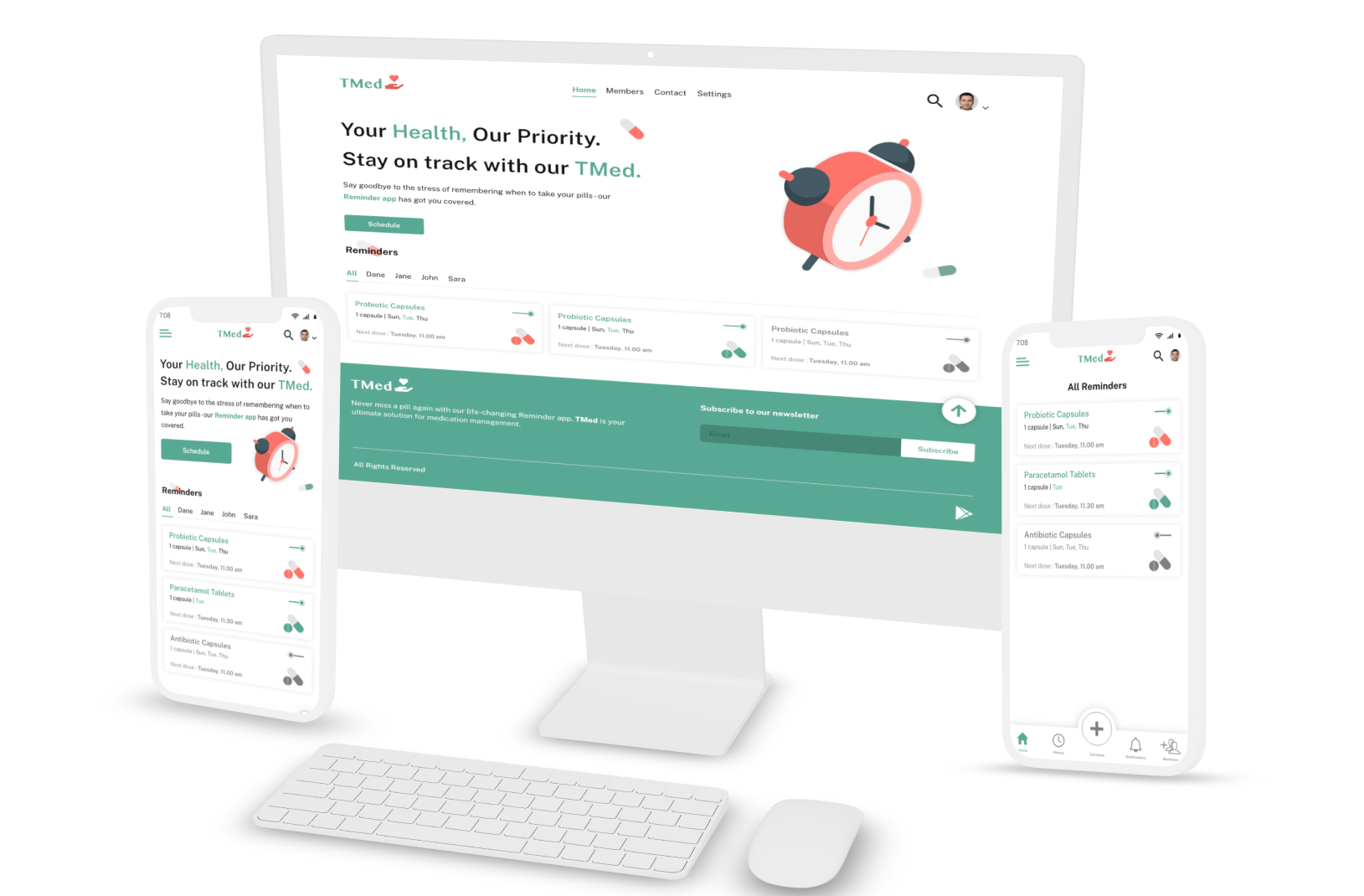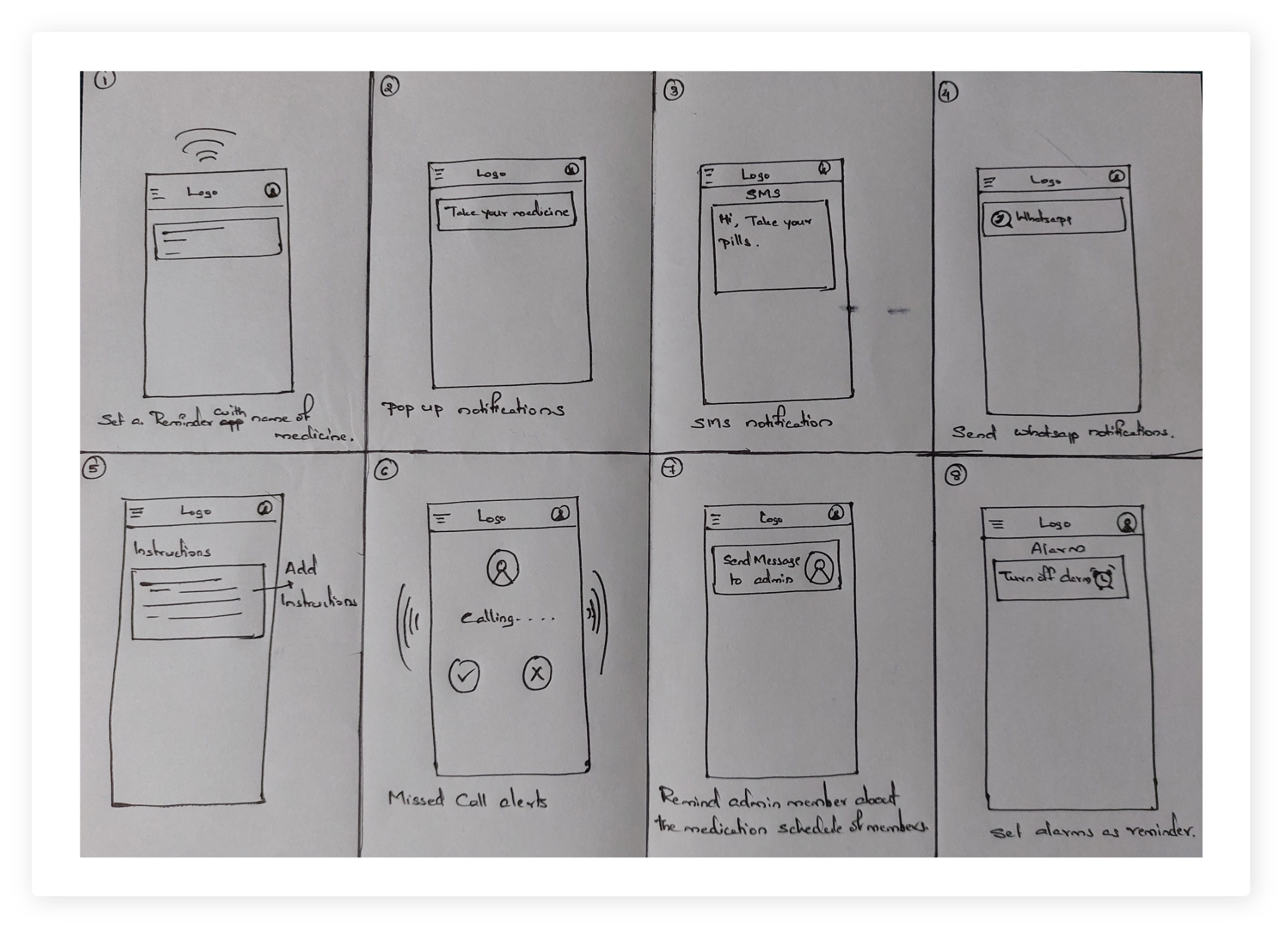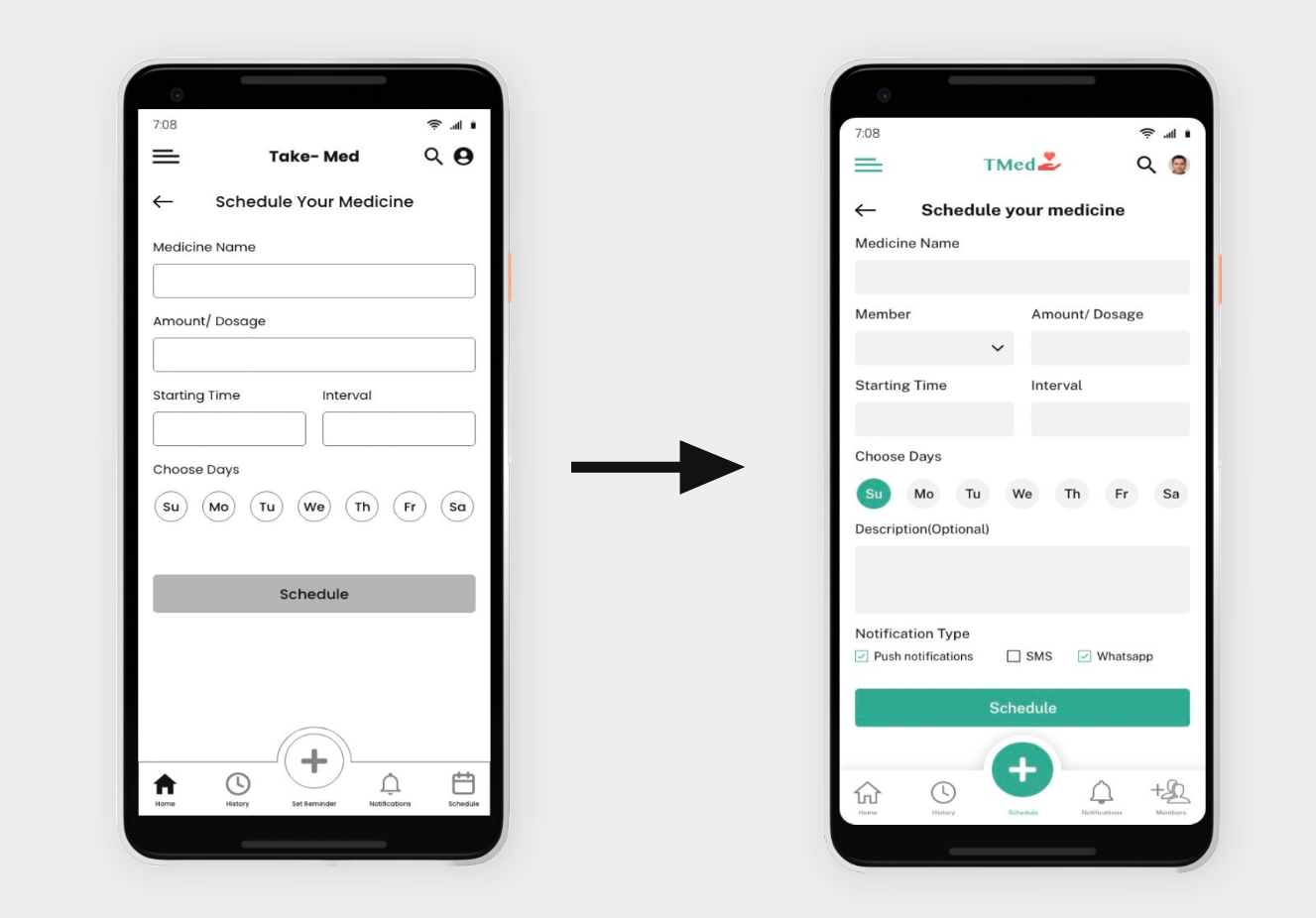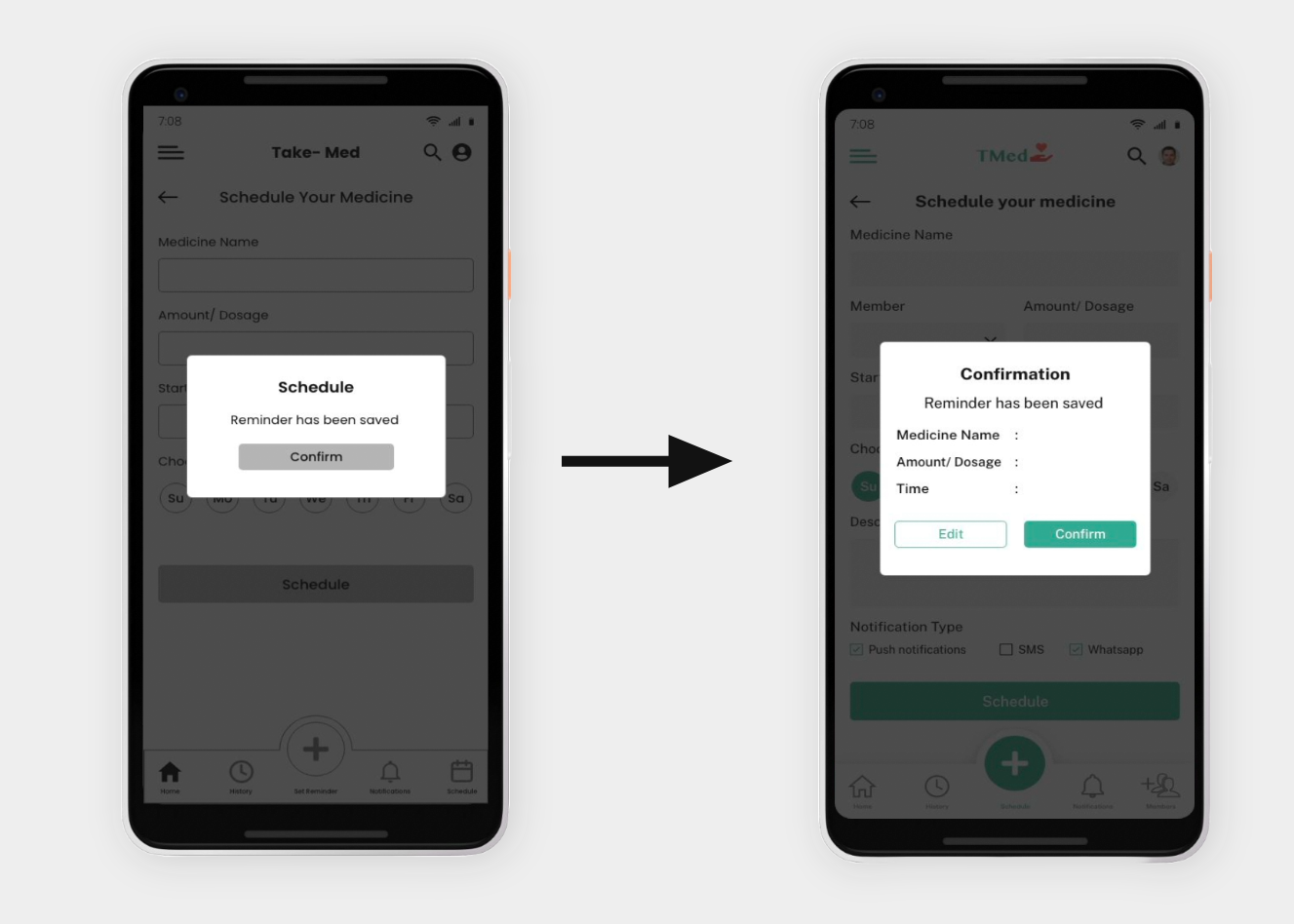
In this busy world, it is difficult to keep a track on important tasks like taking medication on time. Working individuals who have hectic schedules and may easily forget to take their medications. Moreover the elderly population finds it difficult to adhere to prescribed medication schedules.
Design a reminder app that helps people stay organized and ensures that they will never miss their medication schedule.
User research was conducted to understand the needs and pain points of users. By conducting interviews and gathering feedback, I gained valuable insights about their behaviors and preferences.
During the research, common pain point among users were identified. Users usually forgot to take their medication at the designated time which had serious consequences for their health and well-being. Thus it was essential to find a method to effectively remind users about their medication.

In this busy schedule users often forget to take medicines as per schedule.

It is difficult for some users to take responsibility and to track the medications of other members in family like elderly individuals and their children

Navigation experience in most websites are not as expected.
Problem statement: Jenny is a busy professional who needs to remind herself about her parents medication schedule because she wants to ensure that her parents are taking medicines as per schedule.
Problem statement: John is a retired professional at his old age who needs a reminder about his medication schedule, because he wants to take his medicines correctly without bothering others.
An audit of a few competitor’s products provided direction on gaps and opportunities to address with the TMed (Reminder) app.
I did a quick ideation exercise to come up with ideas for how to address gaps identified in the competitive audit. My focus was specifically on the methods to provide a notification to users at the time of taking medicines along with proper dosage instructions.

After initial study and research I created some paper wireframes for the home page of the app. Different iterations were made based on the initial research and then a screen which provides an easy and quick user flow was prioritized.

After ideating and drafting some paper wireframes, I created the initial designs for the TMed (Reminder) app.

To prepare for usability testing, I created a low-fidelity prototype that connected the user flow of adding a reminder and viewing the reminder details and then finally see the new reminder in the reminder list.

Unmoderated usability study

United States, remote

5 participants

30-45 minutes
These were the main findings uncovered by the usability study:

Dosage instructions that could help people especially elderly individuals were preferred by users.

Different options to receive notifications regarding medicine intake was preferred so that they won’t miss any reminder.

Users preferred adding separate reminders for different members in family.

Absence of assistive technologies made apps less accessible.
Based on the insights from the usability studies, I applied design changes like removing confusing buttons that performed similar functions from the home screen (Set reminder button and schedule button). Schedule button was replaced by add member button.

Additional design changes included adding an extra field to add dosage details in the schedule form and a pop up confirmation with details of the reminder scheduled.

Additional design changes included adding an extra field to add dosage details in the schedule form and a pop up confirmation with details of the reminder scheduled.


The Hi fidelity prototype was created based on the research done and based on the usability studies. The design met the user requirements which was discovered after the usability studies.


Provided access to users who are vision impaired through adding alt text to images for screen readers.

Used icons for better navigation.Used images for better understanding of the designs.

Clear labels for interactive elements that can be read by screen readers.
With the app designs completed, I started work on designing the responsive website. I created a sitemap for the TMed responsive website to set a structure for the responsive website, thus providing a smooth and consistent experience across different devices.

The designs for screen size variation included mobile, tablet, and desktop. The designs were optimised for different screen sizes to meet the specific user requirements.

The app helped individuals to set personalized reminders for each medication.TMed app helped both working professionals and elderly individuals to ensure that they and their loved ones are effectively managing their medication schedules.
One quote from peer feedback:
“TMed is a powerful tool that helped me stay organized and ensures that my loved ones never miss their medication schedule.”
I learned that when you are trying to solve a problem always follow an user centric approach. Empathize with the user and understand their behaviour and pain points. Develop a design strongly based on your research outcomes. Learn from the user to come out with an experience that is useful and solves the problem for the user.

Conduct another round of usability study to analyse the overall effectiveness in achieving the goal.

Add more features like routine tracker, and prescription scanners.

Conduct another round of usability study to analyse the overall effectiveness in achieving the goal.

Add more features like routine tracker, and prescription scanners.